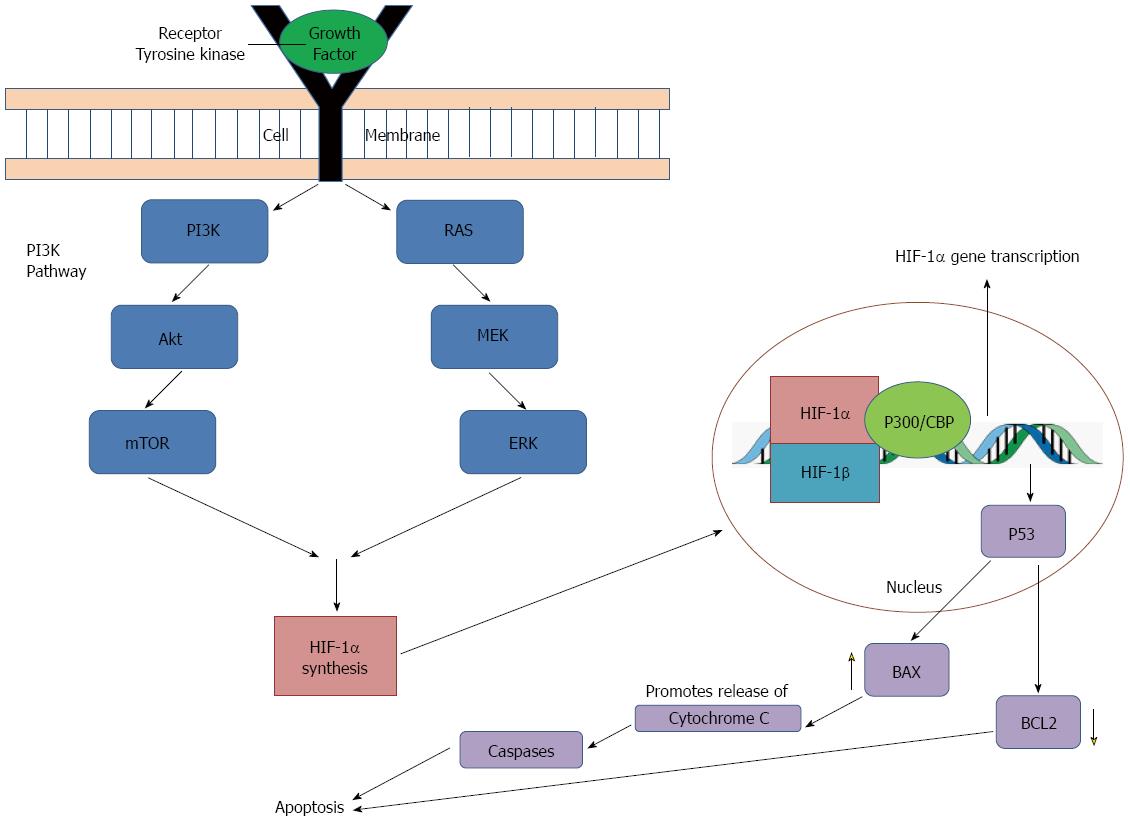Copyright
©The Author(s) 2015.
World J Gastroenterol. Nov 14, 2015; 21(42): 12171-12178
Published online Nov 14, 2015. doi: 10.3748/wjg.v21.i42.12171
Published online Nov 14, 2015. doi: 10.3748/wjg.v21.i42.12171
Figure 3 Hypoxia inducible factor 1α: protein synthesis and relation to apoptotis.
Hypoxia-inducible factor (HIF)-1α synthesis is upregulated by growth factor binding to tyrosine kinase receptors, causing activation of two pathways essential for cell proliferation and survival: the phosphatidylinositol 3-kinase (PI3K) pathway and the mitogen-activated protein kinase (MAPK) pathway. Extracellular signal-related kinase (ERK) and mitogen/extracellular signal-related kinase (MEK) represent members of the MAPK family which are activated as part of a signaling cascade. HIF-1α also interacts with p53, a tumor suppressor gene, which leads to transcription of pro-apoptotic genes. p53 activates transcription of BAX which acts on mitochondria to promote release of cytochrome C, activating a series of caspase signaling, which ultimately promotes apoptosis. In addition, p53 also downregulates BCL2, an anti-apoptotic protein. Together, these actions serve to increase apoptosis. mTOR: Mammalian target of rapamycin.
- Citation: Lin D, Wu J. Hypoxia inducible factor in hepatocellular carcinoma: A therapeutic target. World J Gastroenterol 2015; 21(42): 12171-12178
- URL: https://www.wjgnet.com/1007-9327/full/v21/i42/12171.htm
- DOI: https://dx.doi.org/10.3748/wjg.v21.i42.12171









